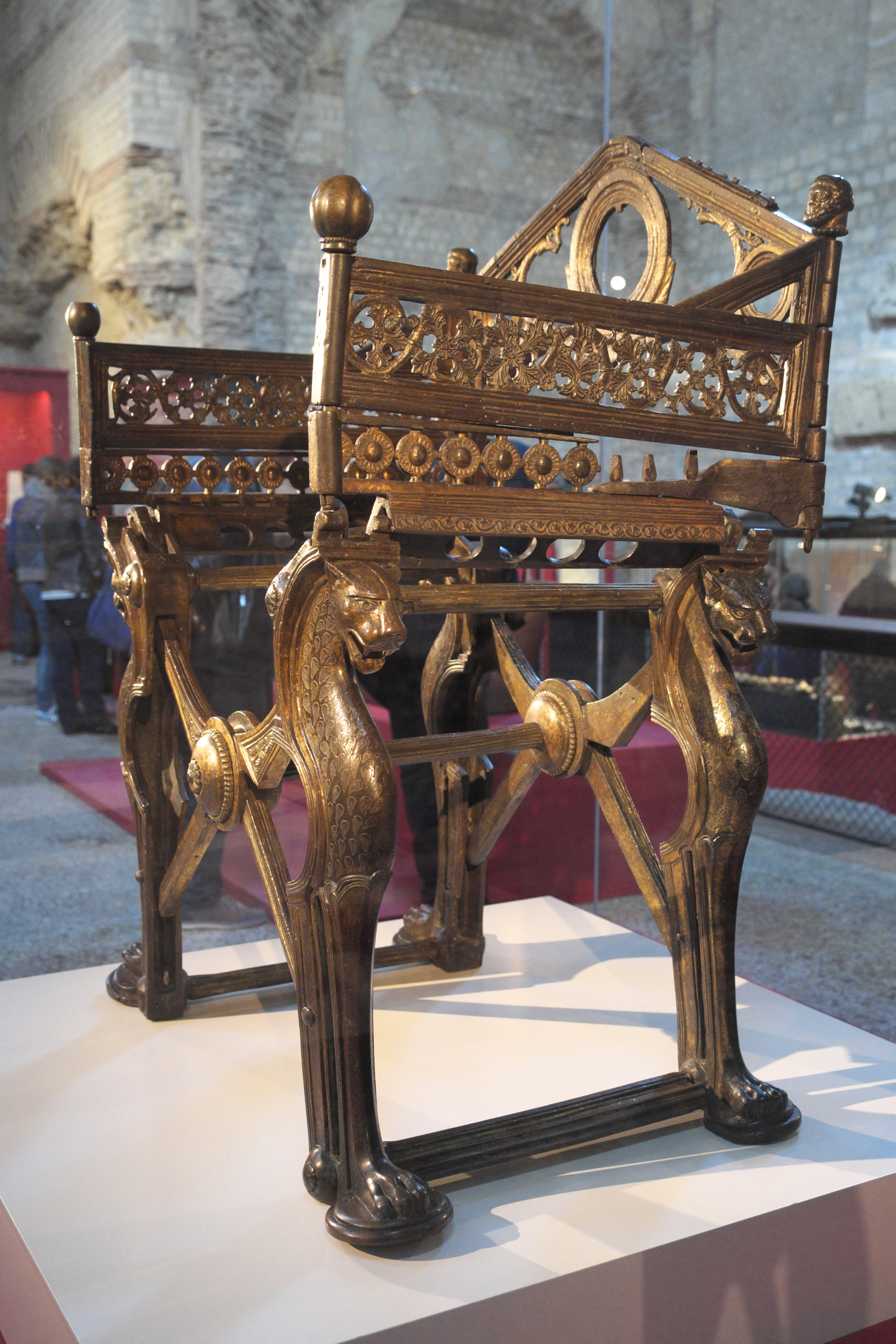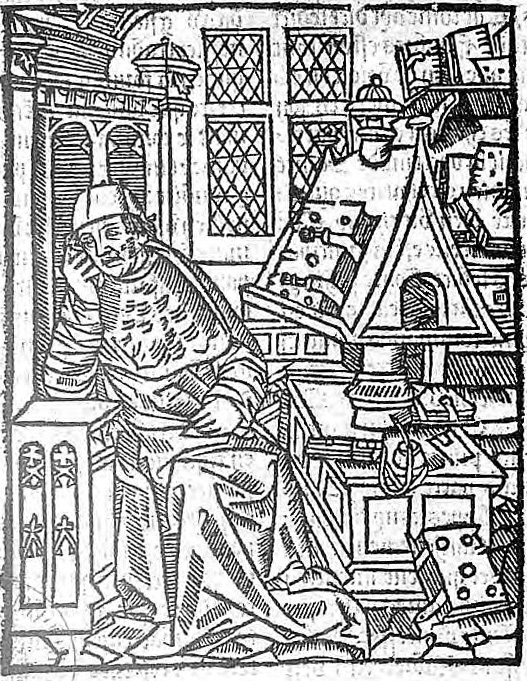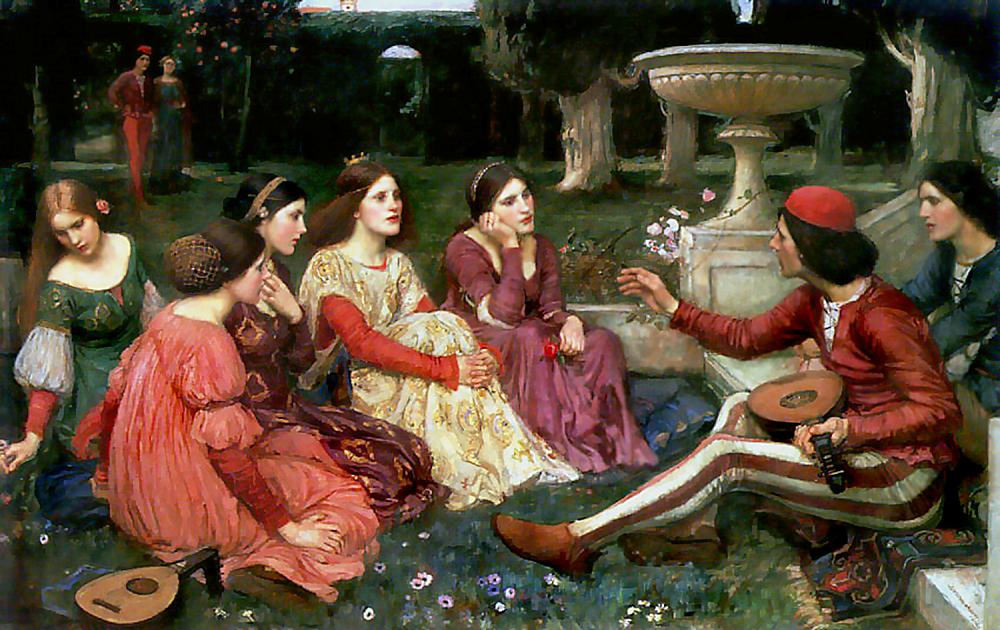|
Octavian (romance)
''Octavian'' is a 14th-century Middle English verse translation and abridgement of a mid-13th century Old French romance of the same name. This Middle English version exists in three manuscript copies and in two separate compositions, one of which may have been written by the 14th-century poet Thomas Chestre who also composed Libeaus Desconus and Sir Launfal. The other two copies are not by Chestre and preserve a version of the poem in regular twelve-line tail rhyme stanzas, a verse structure that was popular in the 14th century in England. Both poetic compositions condense the Old French romance to about 1800 lines, a third of its original length, and relate “incidents and motifs common in legend, romance and chanson de geste.” The story describes a trauma that unfolds in the household of Octavian, later the Roman Emperor Augustus, whose own mother deceives him into sending his wife and his two newborn sons into exile and likely death. After many adventures, the family are at ... [...More Info...] [...Related Items...] OR: [Wikipedia] [Google] [Baidu] |
British Library MS Cotton Caligula A Ii Folio 93v
British may refer to: Peoples, culture, and language * British people, nationals or natives of the United Kingdom, British Overseas Territories, and Crown Dependencies. ** Britishness, the British identity and common culture * British English, the English language as spoken and written in the United Kingdom or, more broadly, throughout the British Isles * Celtic Britons, an ancient ethno-linguistic group * Brittonic languages, a branch of the Insular Celtic language family (formerly called British) ** Common Brittonic, an ancient language Other uses *''Brit(ish)'', a 2018 memoir by Afua Hirsch *People or things associated with: ** Great Britain, an island ** United Kingdom, a sovereign state ** Kingdom of Great Britain (1707–1800) ** United Kingdom of Great Britain and Ireland (1801–1922) See also * Terminology of the British Isles * Alternative names for the British * English (other) * Britannic (other) * British Isles * Brit (other) * B ... [...More Info...] [...Related Items...] OR: [Wikipedia] [Google] [Baidu] |
Dagobert I
Dagobert I ( la, Dagobertus; 605/603 – 19 January 639 AD) was the king of Austrasia (623–634), king of all the Franks (629–634), and king of Neustria and Burgundy (629–639). He has been described as the last king of the Merovingian dynasty to wield any real royal power. Dagobert was the first of the Frankish kings to be buried in the royal tombs at Saint Denis Basilica. Rule in Austrasia Dagobert was the eldest son of Chlothar II and Haldetrude (575–604) and the grandson of Fredegund. Chlothar had reigned alone over all the Franks since 613. In 622, Chlothar made Dagobert king of Austrasia, almost certainly to bind the Austrasian nobility to the ruling Franks. As a child, Dagobert lived under the care of the Carolingian dynasty forebears and Austrasian magnates, Arnulf of Metz and Pepin of Landen. Chlothar attempted to manage the unstable alliances he had with other noble families throughout much of Dagobert's reign. When Chlothar granted Austrasia to Dagobert, he ... [...More Info...] [...Related Items...] OR: [Wikipedia] [Google] [Baidu] |
Yvain And Gawain
''Ywain and Gawain'' is an early-14th century Middle English Arthurian verse romance based quite closely upon the late-12th-century Old French romance '' The Knight of the Lion'' by Chrétien de Troyes. Plot Ywain, one of King Arthur's Knights of the Round Table, while at Arthur's court hears from Sir Colgrevance about an encounter he had with a knight, who defeated him in a fight. Ywain sets out, kills the knight and marries the knight's widow Alundyne with the aid of her serving-lady Lunet (or Lunette), moving into the castle of Alundyne's late husband. However, when Arthur and his men visit them, Gawain encourages Ywain to go off adventuring, leaving his wife behind. During their adventures the two are separated, then find themselves fighting each other but recognise each other and are reunited. Ywain returns to his wife Alundyne and with Lunet's help they are reconciled. Manuscripts The story of ''Ywain and Gawain'' is found in a single manuscript dating to the 15th century ... [...More Info...] [...Related Items...] OR: [Wikipedia] [Google] [Baidu] |
Yvain, Knight Of The Lion
, original_title_lang = fro , translator = , written = between 1178 and 1181 , country = , language = Old French , subject = Arthurian legend , genre = Chivalric romance , form = , meter = Octosyllable , rhyme = Rhyming couplets , lines = 6,818 , oclc = , wikisource = Yvain, the Knight of the Lion , orig_lang_code = fr , native_wikisource = Yvain ou le Chevalier au Lion ''Yvain, the Knight of the Lion'' (french: Yvain ou le Chevalier au Lion) is an Arthurian romance by French poet Chrétien de Troyes. It was written c. 1180 simultaneously with ''Lancelot, the Knight of the Cart'', and includes several references to the narrative of that poem. It is a story of knight-errantry, in which the protagonist Yvain is first rejected by his lady for breaking a very important promise, and subsequently performs a number of heroic ... [...More Info...] [...Related Items...] OR: [Wikipedia] [Google] [Baidu] |
Chrétien De Troyes
Chrétien de Troyes (Modern ; fro, Crestien de Troies ; 1160–1191) was a French poet and trouvère known for his writing on Arthurian subjects, and for first writing of Lancelot, Percival and the Holy Grail. Chrétien's works, including ''Erec and Enide'', ''Lancelot'', ''Perceval'' and ''Yvain'', represent some of the best-regarded of medieval literature. His use of structure, particularly in ''Yvain'', has been seen as a step towards the modern novel. Life Little is known of his life, but he seems to have been from Troyes or at least intimately connected with it. Between 1160 and 1172 he served (perhaps as herald-at-arms, as Gaston Paris speculated) at the court of his patroness Marie of France, Countess of Champagne, daughter of King Louis VII and Eleanor of Aquitaine, who married Count Henry I of Champagne in 1164. Later, he served the court of Philippe d'Alsace, Count of Flanders. Works Chrétien's works include five major poems in rhyming eight-syllable couplets. Fo ... [...More Info...] [...Related Items...] OR: [Wikipedia] [Google] [Baidu] |
Sir Isumbras
''Sir Isumbras'' is a medieval metrical romance written in Middle English and found in no fewer than nine manuscripts dating to the fifteenth century. This popular romance must have been circulating in England before 1320, because William of Nassyngton, in his work '' Speculum Vitae'', which dates from this time, mentions feats of arms and other 'vanities', such as those found in stories of Sir Guy of Warwick, Bevis of Hampton, Octavian and Sir Isumbras.Hudson, Harriet. 1996. Unlike the other three stories, the Middle English ''Sir Isumbras'' is not a translation of an Old French original. Sir Isumbras is a proud knight who is offered the choice of happiness in his youth or his old age. He chooses the latter, and falls from his high estate by the will of Providence. He is severely stricken; his possessions, his children and, lastly, his wife, are taken away; and he himself becomes a wanderer. After much privation he trains as a blacksmith, learning to forge anew his armour, and h ... [...More Info...] [...Related Items...] OR: [Wikipedia] [Google] [Baidu] |
William Of Palerne
''Guillaume de Palerme'' ("William of Palerne") is a French romance poem, later translated into English where it is also known as ''William and the Werewolf''. The French verse romance was composed , commissioned by Countess Yolande (who is generally identified as Yolande, daughter of Baldwin IV, Count of Hainaut). The prose version of the French romance, printed by N Bonfons, passed through several editions. The English poem in alliterative verse, commissioned by Humphrey de Bohun, 6th Earl of Hereford, was written by a poet named William. A single surviving manuscript of the English version is held at King's College, Cambridge. The Oxford English Dictionary has cited this poem as being the earliest known use of singular ''they'' in written English. Plot Guillaume, a foundling supposed to be of low degree, is brought up at the court of the emperor of Rome, and loves the emperor's daughter Melior who is promised to a Greek prince. The lovers flee into the woods disguised in ... [...More Info...] [...Related Items...] OR: [Wikipedia] [Google] [Baidu] |
Sir Tryamour
''Sir Tryamour'' is a Middle English romance dated to the late fourteenth century. The source is unknown and, like almost all of the Middle English romances to have survived, its author is anonymous. The 1,719-line poem is written in irregular tail rhyme stanzas composed in the Northeast Midlands dialect. There are textual ambiguities and obscurities that suggest corruptionFellows xvii. or "loose transmission." Consequently, interpretations, glosses and notes vary between editions, sometimes substantially. Plot summary King Ardus of Aragon and his wife, Margaret, have no children, so he pledges to go on crusade in the hope that God will grant him an heir. A son is conceived the night before he leaves for the Holy Land, though neither of them know it. During the king's absence his steward, Marrok, attempts to seduce the queen, who firmly rejects him. In retaliation, when the king comes home Marrok tells him that the queen was unfaithful while he was gone and that the child is not h ... [...More Info...] [...Related Items...] OR: [Wikipedia] [Google] [Baidu] |
Sir Eglamour Of Artois
''Sir Eglamour of Artois'' is a Middle English verse romance that was written sometime around 1350. It is a narrative poem of about 1300 lines, a tail-rhyme romance that was quite popular in its day, judging from the number of copies that have survived – four manuscripts from the 15th century or earlier and a manuscript and five printed editions from the 16th century. The poem tells a story that is constructed from a large number of elements found in other medieval romances. Modern scholarly opinion has been critical of it because of this, describing it as unimaginative and of poor quality. Medieval romance as a genre, however, concerns the reworking of "the archetypal images of romance" and if this poem is viewed from a 15th-century perspective as well as from a modern standpoint – and it was obviously once very popular, even being adapted into a play in 1444 – one might find a "romance hatis carefully structured, the action highly unified, the narration lively." The action ... [...More Info...] [...Related Items...] OR: [Wikipedia] [Google] [Baidu] |
Crescentia (romance)
''Crescentia'' is an Early Middle High German language chivalric romance, included in the ''Kaiserchronik'' about 1150. Other versions appeared in the thirteenth and fourteenth centuries, in prose and verse. Numerous romances, such as ''Le Bone Florence of Rome'', are classified as belonging to the "Crescentia cycle" because of the common plot; it is the oldest known variant of it.Laura A. Hibbard, ''Medieval Romance in England'' p. 12 New York Burt Franklin,1963 Romance Crescentia is approached by her brother-in-law, in her husband's absence, with offers of love. She tricks him into a tower imprisonment, but frees him out of joy at her husband's imminent return. He accuses her of adultery to his brother, and she is thrown in the Tiber by her husband and saved by St. Peter. She finds refuge in a court, where she rebuffs another lover, who frames for murder of her fosterling by a bloody dagger, and she is thrown in the water again. St. Peter grants her healing powers. Her pe ... [...More Info...] [...Related Items...] OR: [Wikipedia] [Google] [Baidu] |
Emaré
''Emaré'' is a Middle English Breton lai, a form of mediaeval romance poem, told in 1035 lines. The author of ''Emaré'' is unknown and it exists in only one manuscript, Cotton Caligula A. ii, which contains ten metrical narratives. ''Emaré'' seems to date from the late fourteenth century, possibly written in the North East Midlands. The iambic pattern is rather rough.Emaré: Introduction', Edited by Anne Laskaya and Eve Salisbury, Originally Published in The Middle English Breton Lays, Kalamazoo, Michigan: Medieval Institute Publications, 1995 It tells a version of the popular "Constance-saga". Plot summary The text begins with a standard invocation to Christ, but one of uncommon length; it may be the longest one in English romance. We are then told of Sir Artyus, an Emperor. His wife gives birth to a beautiful baby girl but dies shortly afterwards. The daughter, Emaré, is sent to live with a lady named Abro who raises her and teaches her manners and sewing. Some years late ... [...More Info...] [...Related Items...] OR: [Wikipedia] [Google] [Baidu] |
The Canterbury Tales
''The Canterbury Tales'' ( enm, Tales of Caunterbury) is a collection of twenty-four stories that runs to over 17,000 lines written in Middle English by Geoffrey Chaucer between 1387 and 1400. It is widely regarded as Chaucer's ''Masterpiece, magnum opus''. The tales (mostly written in verse (poetry), verse, although some are in prose) are presented as part of a story-telling contest by a group of pilgrims as they travel together from London to Canterbury to visit the shrine of Saint Thomas Becket at Canterbury Cathedral. The prize for this contest is a free meal at the The Tabard, Tabard Inn at Southwark on their return. It has been suggested that the greatest contribution of ''The Canterbury Tales'' to English literature was the popularisation of the English vernacular in mainstream literature, as opposed to French, Italian or Latin. English had, however, been used as a literary language centuries before Chaucer's time, and several of Chaucer's contemporaries—John Gower, W ... [...More Info...] [...Related Items...] OR: [Wikipedia] [Google] [Baidu] |

_Owain.jpg)

